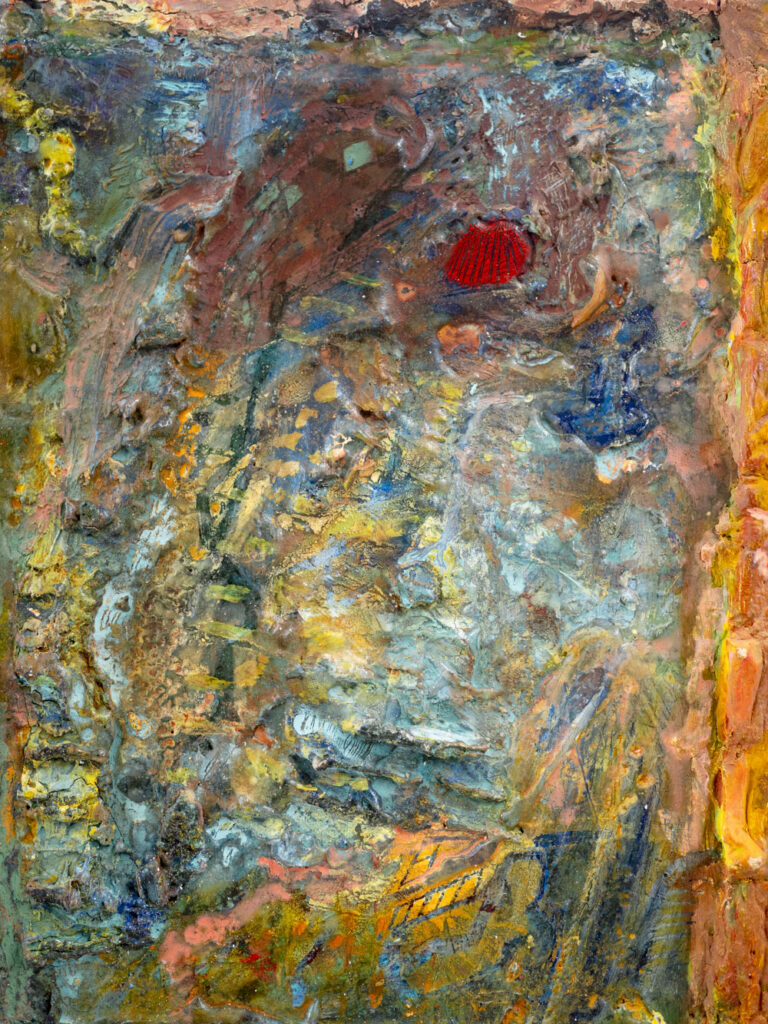Philosophical considerations.
In simpler terms, this idea is rooted in different philosophical views about the mind and the world around us. Some people might see the mind and body as separate entities, while others might believe that everything in nature has a form of consciousness. There are also those who go a step further, suggesting that the entire world is a projection of the mind. On the flip side, some focus solely on the physical world, arguing that what we can observe and measure is all there is, and these physical properties are the building blocks of reality. So, we’re exploring various ways of understanding the world, from the mental to the purely physical.
Enigmatic Dualism of visionary art.
Behold the enigmatic tapestry that is Art Visionary POP—a visual exploration steeped in the alchemy of mind-body philosophy. Employing the evocative term POP (Point-Of-Light-Person), this oeuvre transcends traditional dualistic paradigms, offering a quartet of vantage points for the discerning eye. Sides A and B unfurl a landscape of abstract forms and emergent likenesses, a harmonious tension that invites the gaze to linger. In juxtaposition, the lateral edges of the artwork feature tactile bas-reliefs adorned with printed elements, lending an additional layer of meaning.
Rather than adhering strictly to the classic mind-body dichotomy, the essence captured here gravitates towards ‘property dualism.’ It’s as if the artwork serves as a liminal space, a threshold between varying dualities, asking us to ponder what makes a mind distinct from a body, and yet inextricably bound to it. Welcome to the labyrinth of Art Visionary POP, where each gaze is a step deeper into a philosophical maze. So to sum up here are the main points to consider:
The document discusses different philosophical views regarding the mind and the world. Some of these views include:
- The belief that the mind and body are separate entities.
- The belief that everything in nature has a form of consciousness.
- The suggestion that the entire world is a projection of the mind.
- The focus on the physical world, arguing that what we can observe and measure is all there is.
These views represent different perspectives on the relationship between the mind and the world, ranging from dualistic views to more holistic or materialistic perspectives.
Art Visionary POP is a visual exploration that combines art and philosophy, specifically the philosophy of mind-body dualism. It transcends traditional dualistic paradigms by offering multiple perspectives for the viewer. The artwork features abstract forms and emergent likenesses on its main surfaces, while the lateral edges showcase tactile bas-reliefs with printed elements. Instead of strictly adhering to the classic mind-body dichotomy, Art Visionary POP leans towards “property dualism,” creating a liminal space that invites contemplation on the distinction between mind and body. It challenges traditional paradigms by presenting a complex and enigmatic tapestry that prompts viewers to ponder the relationship between the mind and the physical world.
The relationship between the concept of the world being a projection of the mind and the distinction between the mind and the body is that it challenges the traditional dualistic view of the mind and body as separate entities. The idea that the world is a projection of the mind suggests that the mind and its perceptions play a fundamental role in shaping our understanding of reality. This perspective blurs the boundaries between the mind and the external world, suggesting that they are interconnected and mutually influencing.
In contrast, the distinction between the mind and the body is a philosophical concept that explores the relationship between mental and physical phenomena. It considers the mind as a separate entity from the physical body, with its own distinct properties and functions. This perspective emphasizes the subjective experiences and consciousness of the mind, while the body is seen as the physical vessel that houses the mind.
The concept of the world being a projection of the mind challenges this dualistic view by suggesting that the mind and the external world are not separate, but rather intertwined. It implies that our perceptions and interpretations of the world are influenced by our mental processes, blurring the boundaries between the mind and the body.

